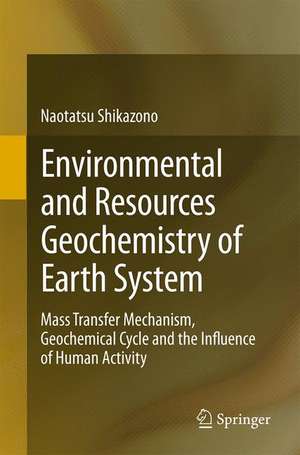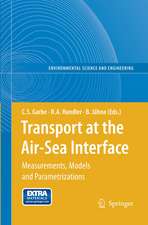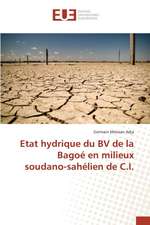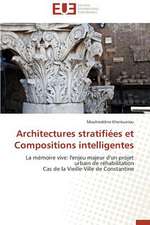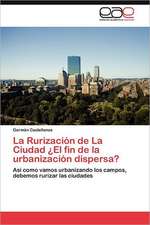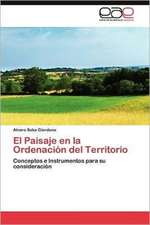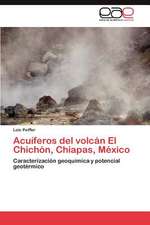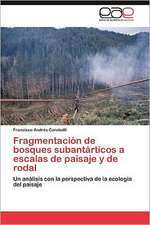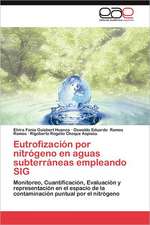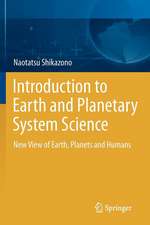Environmental and Resources Geochemistry of Earth System: Mass Transfer Mechanism, Geochemical Cycle and the Influence of Human Activity
Autor Naotatsu Shikazonoen Limba Engleză Paperback – 22 ian 2015
Preț: 386.22 lei
Nou
Puncte Express: 579
Preț estimativ în valută:
73.93€ • 80.33$ • 62.14£
73.93€ • 80.33$ • 62.14£
Carte tipărită la comandă
Livrare economică 21 aprilie-05 mai
Preluare comenzi: 021 569.72.76
Specificații
ISBN-13: 9784431549031
ISBN-10: 443154903X
Pagini: 244
Ilustrații: XVIII, 244 p. 163 illus., 125 illus. in color.
Dimensiuni: 155 x 235 x 12 mm
Greutate: 0.37 kg
Ediția:2015
Editura: Springer
Colecția Springer
Locul publicării:Tokyo, Japan
ISBN-10: 443154903X
Pagini: 244
Ilustrații: XVIII, 244 p. 163 illus., 125 illus. in color.
Dimensiuni: 155 x 235 x 12 mm
Greutate: 0.37 kg
Ediția:2015
Editura: Springer
Colecția Springer
Locul publicării:Tokyo, Japan
Public țintă
ResearchCuprins
Chemical equilibrium.- Partial chemical equilibrium.- Mass transfer mechanism.- System analysis.- Geochemical cycle.- Interaction between nature and humans.
Notă biografică
Naotatsu Shikazono earned his master’s (1972) and doctoral (1974) degrees in geology at University of Tokyo, Japan. After that, he has been teaching and researching at the Geology Department of the University of Tokyo and Geochemistry Department of Keio University until 2012. He is now emeritus professor of Keio University, member of SFC Institute of Keio University, and Tokyo Gakugei University. His research is focused on the economic geology (genesis of ore deposits), global geochemical cycle and environmental geochemistry, He is the author of Introduction to Earth and Planetary System Science (2012, published from Springer) and Geochemical and Tectonic Evolution of Arc-Back Arc Hydrothermal Systems (2003, published from Elsevier). He is an editor in chief of Journal of Geography Chigakuzasshi, Japan) and a recipient of Takeo Kato Award of the Society of Resource Geology (2010).
Textul de pe ultima copertă
The Earth system consists of subsystems that include the atmosphere, hydrosphere (water), geosphere (rocks, minerals), biosphere, and humans. In order to understand these subsystems and their interactions, it is essential to clarify the mass transfer mechanism, geochemical cycle, and influence of human activity on the natural environment. This book presents fundamental theories (thermodynamics, kinetics, mass balance model, coupling models such as the kinetics-fluid flow model, the box model, and others) concerning mechanisms in weathering, formation of hydrothermal ore deposits, hydrothermal alteration, formation of groundwater quality, and the seawater system. The interaction between fluids (atmosphere, water) and solid phases (rocks, minerals) occurs both in low-temperature and also in high-temperature systems. This book considers the complex low-temperature cycle with the high-temperature cycle, a combination that has not been dealt with in previous books concerning Earth systems. Humanity is a small part of the biosphere; however, human activities greatly influence Earth’s surface environments (atmosphere, hydrosphere, biosphere, soils, rocks). Thus, the influences of humans on other subsystems, particularly mass transfer in the deep underground geologic environment composed of host rocks and groundwater, are discussed in relation to high-level nuclear waste geologic disposal and CO2 underground sequestration—topics that have not been included in other books on environmental science.
Caracteristici
Presents applications of basic theories (thermodynamics, kinetics, mass balance model, coupling model) to interpret the compositional variations in water-rock interaction Provides box models applying to the short-term and long-term atmospheric CO2 and climate changes Discusses relationships between box model and mass transfer mechanism and also between humans and other subsystems
